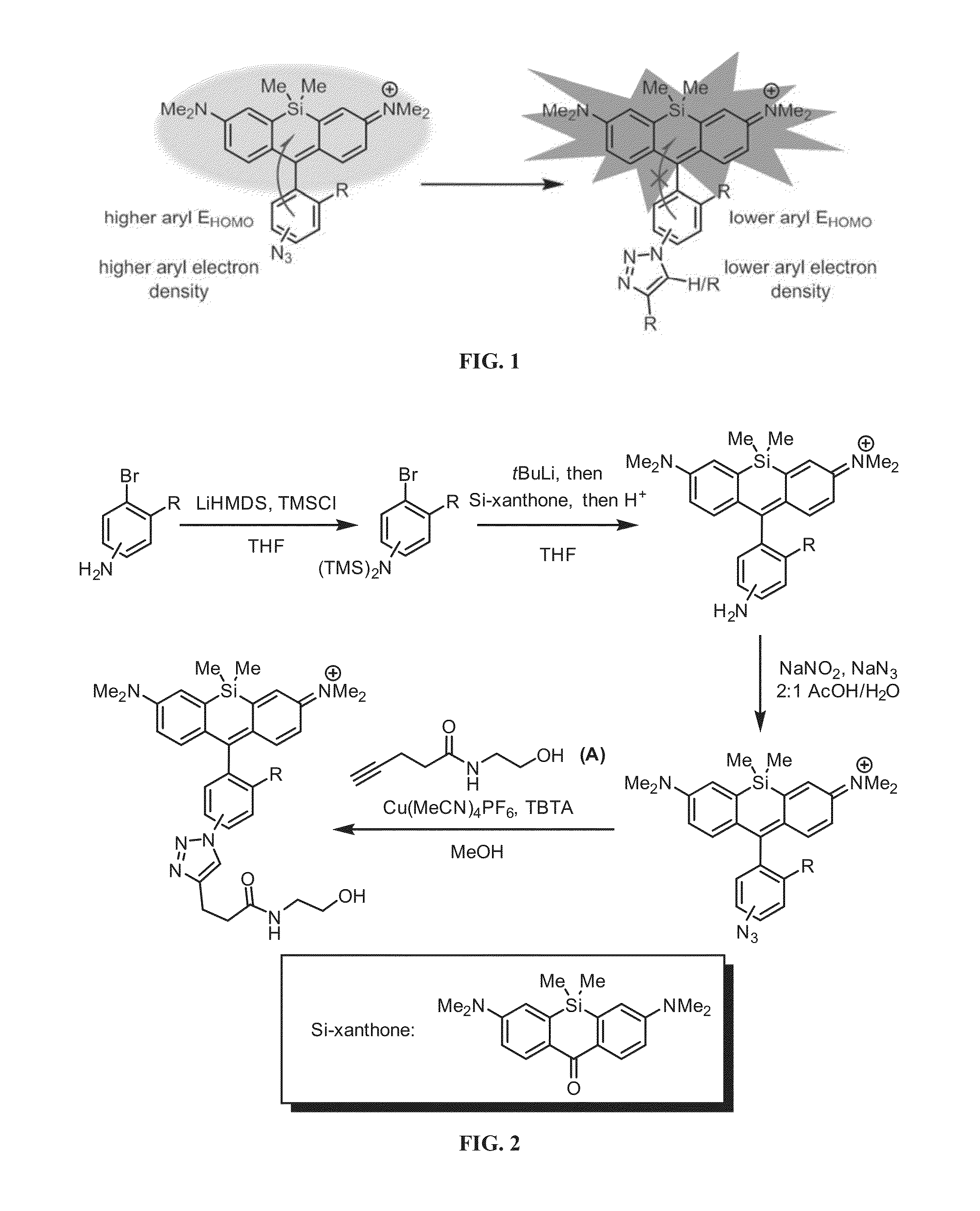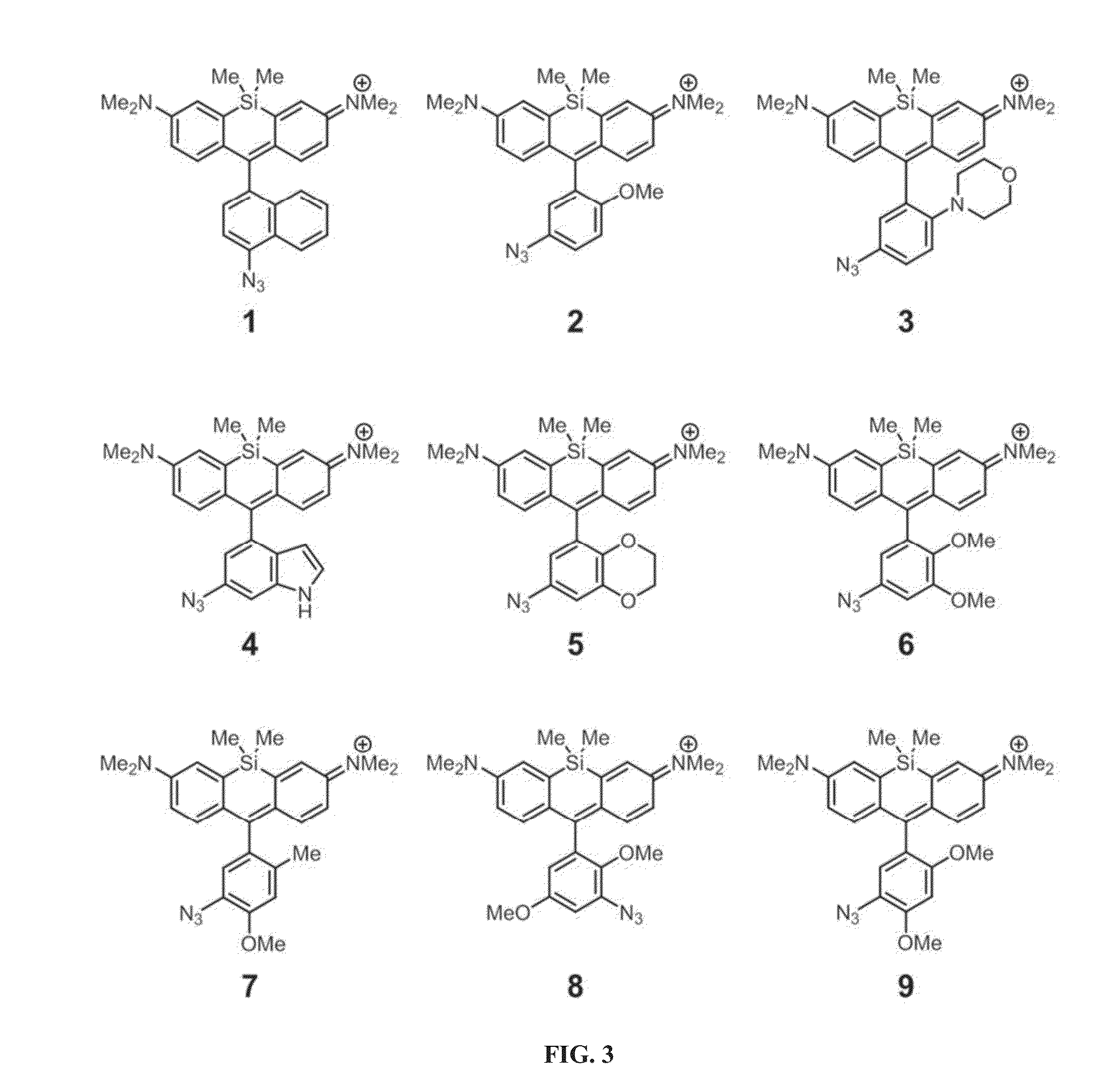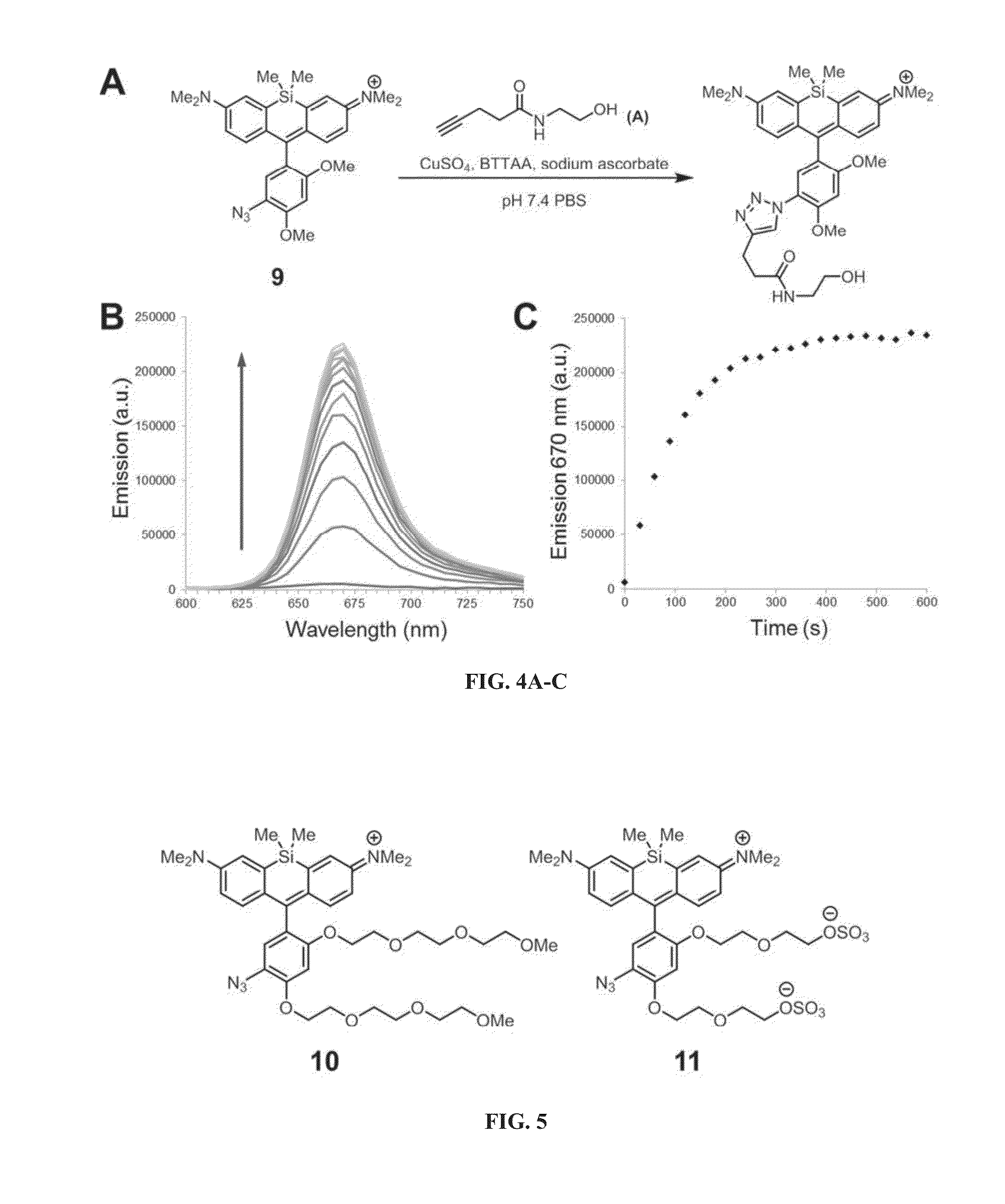Alkyne-activated fluorogenic azide compounds and methods of use thereof
a technology of fluorogenic azide and active compounds, which is applied in the field of alkyne-activated fluorogenic azide compounds and methods of use thereof, can solve the problems of much more difficult identification of activatable near-infrared (nir) fluorogenic probes with emission maxima greater than 600 nm
- Summary
- Abstract
- Description
- Claims
- Application Information
AI Technical Summary
Benefits of technology
Problems solved by technology
Method used
Image
Examples
example 1
Synthesis and Evaluation of Azido Si-Rhodamines
[0249]An efficient and modular synthesis to access azide-functionalized Si-rhodamines from various bromoanilines was developed (FIG. 2). The bromoanilines were first protected as the bis-trimethylsilyl (TMS) derivatives by deprotonation with lithium hexamethyldisilazide (LiHMDS) and reaction with trimethylsilyl chloride (TMSCl). Next, the protected bromoanilines were subjected to lithium-halogen exchange and added into Si-xanthone, which afforded the amino Si-rhodamines after acidic workup. As described below, the photophysical properties of these intermediates were measured in comparison to their azido and triazolyl counterparts. The amino Si-rhodamines were finally subjected to diazotization with sodium nitrite and displacement by azide ion to yield the desired azido Si-rhodamines. Through this route, compounds 1-9 (FIG. 3) were generated. To evaluate fluorescence enhancement upon triazole formation, the corresponding triazolyl Si-rho...
example 2
CalFluors
A Universal Motif for Fluorogenic Azide Probes Across the Visible Spectrum
[0404]A universal switch capable of PeT across a variety of dye structures was identified for use in activatable azide probes with various photophysical and photochemical properties. It is demonstrated herein that the 3-azido 4,6-dialkoxyaryl group possesses this capability. Incorporation of this group into various xanthene scaffolds provided a palette of dyes that emit at green to near-infrared (NIR) wavelengths. When functionalized with water solubilizing groups, these probes provided robust and sensitive detection of alkyne-labeled biomolecules under no-wash conditions and in a variety of settings, including live cells and tissue sections. The probes are referred to as Click Activated Luminogenic Fluorophores, or CalFluors.
Results
[0405]The 3-azido-4,6-dimethoxy benzene substituent was identified as a fluorogenic switch that outperformed many other aryl substituents examined. To further investigate ...
PUM
| Property | Measurement | Unit |
|---|---|---|
| Acidity | aaaaa | aaaaa |
Abstract
Description
Claims
Application Information
 Login to View More
Login to View More - R&D
- Intellectual Property
- Life Sciences
- Materials
- Tech Scout
- Unparalleled Data Quality
- Higher Quality Content
- 60% Fewer Hallucinations
Browse by: Latest US Patents, China's latest patents, Technical Efficacy Thesaurus, Application Domain, Technology Topic, Popular Technical Reports.
© 2025 PatSnap. All rights reserved.Legal|Privacy policy|Modern Slavery Act Transparency Statement|Sitemap|About US| Contact US: help@patsnap.com



